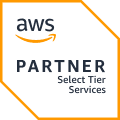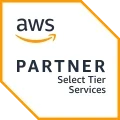
Effectively managing cloud expenses is not just an option; it’s a necessity. The complexity of AWS and the need to continually adapt your cloud infrastructure to ever-changing business needs can often result in cloud costs spiraling out of control. AWS cost optimization involves extracting the maximum value from AWS services for every dollar spent. It requires a thorough understanding of AWS service consumption, identifying primary cost drivers, and strategically implementing various measures to minimize costs without affecting availability or performance.
Identifying Inefficiencies
Analyzing Cloud Usage
The first step in identifying inefficiencies in your AWS bill is to analyze your usage. AWS Cost Explorer is an essential tool for this purpose: it provides a set of detailed reports that break down your costs and usage, allowing you to view your data graphically or in tabular form and dive deep into specifics. It’s particularly useful for visualizing your cost patterns over time, analyzing them in detail, and identifying cost spikes.
Cost Explorer also allows you to group and filter cost and usage information by various dimensions, such as service, linked account, or custom cost allocation tags. This is crucial for identifying which resources or services constitute the largest proportion of your AWS bill, letting you understand where to focus your cost-optimization efforts. It will also enable you to track the effectiveness of your cost optimization strategies and efforts over time, by comparing current cost usage patterns with historical data, and seeing how your changes impact your costs.
Examining Resource Utilization
Understanding how resources are being used is essential for identifying inefficiencies. It’s common to analyze usage data and find that some resources are over-provisioned. For instance, an EC2 instance might be sized based on peak load, leaving it underutilized during off-peak hours. Another common scenario is resources being intentionally over-provisioned during the creation of the environment, prioritizing development speed over cost optimization, with a plan to optimize costs later. However, usage analysis is often neglected, leaving instances over-provisioned by default.
AWS CloudWatch, a monitoring and observability service, can help identify such situations. CloudWatch enables you to monitor resource utilization in real-time, allowing you to view graphs of utilization and performance. AWS also offers the Compute Optimizer service, which makes recommendations for your EC2 instances and Auto Scaling groups based on historical utilization data analyzed with machine learning algorithms.
Monitoring and Adjusting Costs
Cloud cost optimization is not a one-time activity; it requires continuous monitoring and analysis. You can use Cost Explorer to periodically review your AWS costs and understand how they change over time, observing the impact of your infrastructure changes and cost optimization efforts. Additionally, you can use AWS Budgets to set custom cost and usage budgets that alert you when your costs or usage exceed or are forecasted to exceed the budgeted amount.
Cost Explorer can also help you track the usage of your Reserved Instances and Savings Plans. Reserved Instances and Savings Plans are purchase options that offer significant cost savings compared to On-Demand pricing but require an upfront commitment and careful planning. Monitoring their usage ensures that you’re maximizing the return on your investment.
Taking Action
Scaling Resources
One of the key benefits of the cloud is the ability to scale resources to match demand, making it a powerful tool for cost optimization. By configuring resources to scale based on usage metrics, you can avoid unutilized or underutilized resources and only pay for the capacity that you actually need.
With AWS Auto Scaling, you can configure clusters of EC2 instances to automatically scale out (add more instances) or scale in (terminate unused instances) as needed. Auto Scaling can be based on different usage metrics, such as the average number of requests received by the cluster or the average CPU usage across all instances.
Serverless computing is another option, where AWS handles the scaling automatically, and you pay only for the resources you actually use. You can build applications to be natively serverless using Lambda functions for compute capacity or migrate non-serverless native applications from EC2 instances to Fargate. Databases can also be serverless, either with Aurora Serverless compatible with Postgres and MySQL or with a native serverless database like DynamoDB.
Implementing Cost Optimization Strategies
Here are some cost-optimization strategies that can help reduce your cloud costs:
Utilizing different purchase options, such as Reserved Instances and Savings Plans, can lead to significant cost savings for predictable workloads.
Shutting down resources when they are not needed, such as development environments that are unused after office hours, can result in cost savings of approximately 70% compared to keeping those resources running at all times.
Applying cost allocation tags to resources helps allocate costs more easily to specific projects or departments, allowing you to identify where costs are coming from and better understand where cost-saving strategies will be most effective.
For a detailed analysis of cost optimization strategies, read our article "5 Best Practices to Save Money on AWS".
Utilizing Cost-Saving Services
AWS provides several services and features to help users save costs and reduce their bills. One of them is AWS Trusted Advisor, an automated tool that provides real-time guidance to help you follow AWS best practices, offering insights and recommendations for cost optimization. Another tool is AWS Compute Optimizer, which uses machine learning to analyze historical usage data of your EC2 instances and Auto Scaling groups and make purchase recommendations tailored to your usage patterns.
An alternative and sometimes more efficient way to save costs is to use a third-party service. Dotted uses group buying and AI algorithms to automate cost savings in AWS, with zero engineering input and financial risk to you. It’s the fastest way to save 40% on your AWS bill, at no cost to you.
Conclusion
AWS cost optimization is not a one-time task but a continuous process of monitoring and analyzing cost and usage data, adjusting parameters, and implementing cost-saving strategies. By applying cost-optimization strategies and best practices, you can keep your AWS costs as low as possible and stay on top of your cloud spending. While manual efforts can be effective, the easiest way is to use an automated tool like Dotted, which can reduce your AWS bill by up to 40% with no engineering effort and no cost to you.


